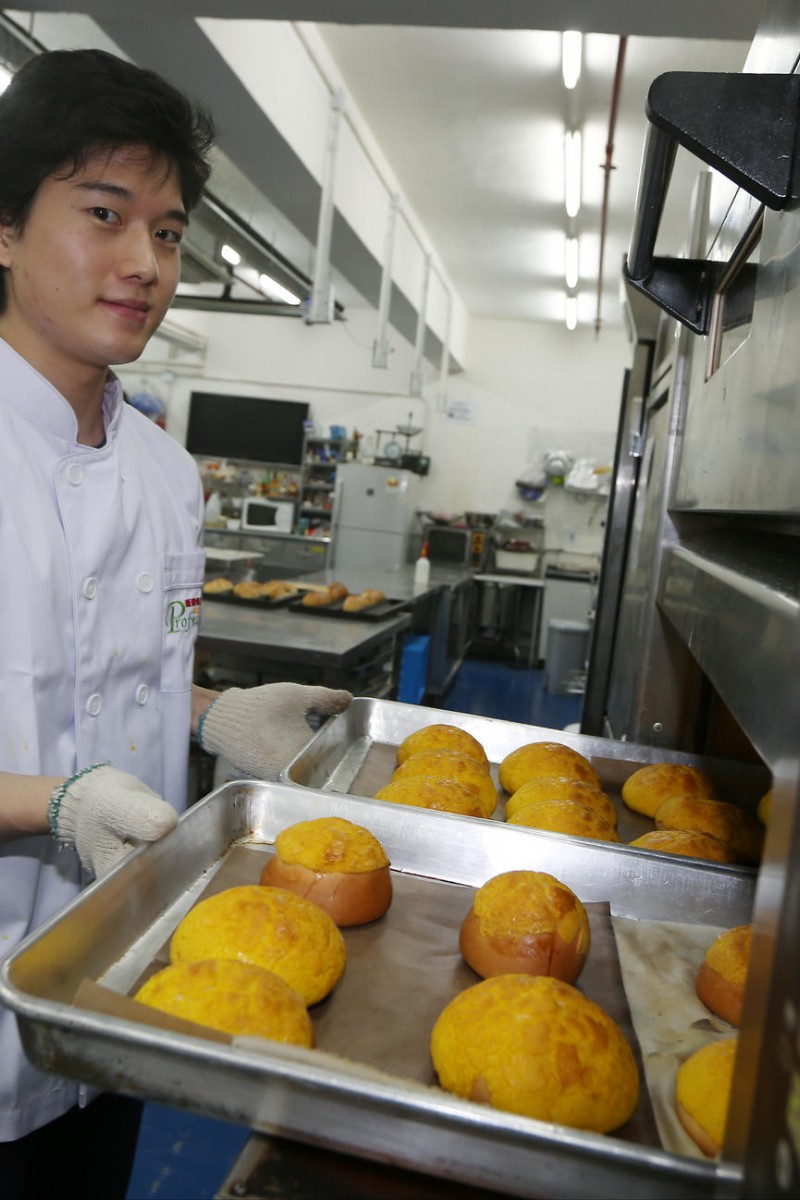
Reporter John Kang discovers the perks of being able to eat your work, using a few simple ingredients to create some deliciously tasty treats

On a baking hot day in Chai Wan, I learned what it's like to make your own breakfast and snacks from Dr Simon Wong, the founder and principal of the training centre, who's been studying the craft for more than 30 years.
I originally thought that baking would be easy; however I quickly learned that it's not as simple as it looks.
I first learned how to make one of the most iconic breads in the world - the baguette. I've heard that making baguettes is très difficile, but if you look at the ingredients, you wouldn't think so. All you need is flour, water, eggs, salt, yeast, and a baker with a PhD to make it for you.
My instructions were to simply mix all the ingredients together, and within a minute, I was already in a sticky situation. Dr Wong's actually looked like dough - it was smooth, shapeable, and not sticky, whereas mine was just sticky.
I couldn't shape it because it got stuck on the table or on my hands. Dr Wong fixed mine by adding some flour - which helped absorb the excess water - and then kneading it very quickly.
Apparently, I was kneading it too slowly so it didn't mix properly. I didn't know that kneading just a few seconds too slowly could ruin the bread.
Pineapple buns
Once my dough looked more like, well, dough, we moulded it into a roundish shape and left it to "proof". This means letting the yeast convert the sugar into carbon dioxide, causing the dough to become airy and rise, creating the soft inside of the baguette.
While we left the dough to proof, we worked on a classic Hong Kong bread - the pineapple bun. The ingredients for these were exactly the same as the baguette, except there was also the flaky topping, which is made with flour, butter, sugar, and artificial food colouring for the yellow colour. As you can see, despite its name, there is as much pineapple in pineapple buns as there is in a baguette.
Making the pineapple buns was much more difficult than the baguette because of the sheer number of little balls of dough I had to knead and quickly complete, before the dough dried out.
Tasting time
After we arranged all of the dough onto a tray, we put it in the oven and left it to bake. Although the dough I made wasn't perfect, both the baguette and the pineapple buns tasted exactly as they were supposed to taste.
After hours of baking, I realised that bakers really have to earn their dough.
As soon as you mix the ingredients together, you're fighting against the clock because you don't want the dough to dry out, and you're trying to knead as you feel your shoulders cramp.
However, it's such a rewarding job because you can see, smell and taste your work.